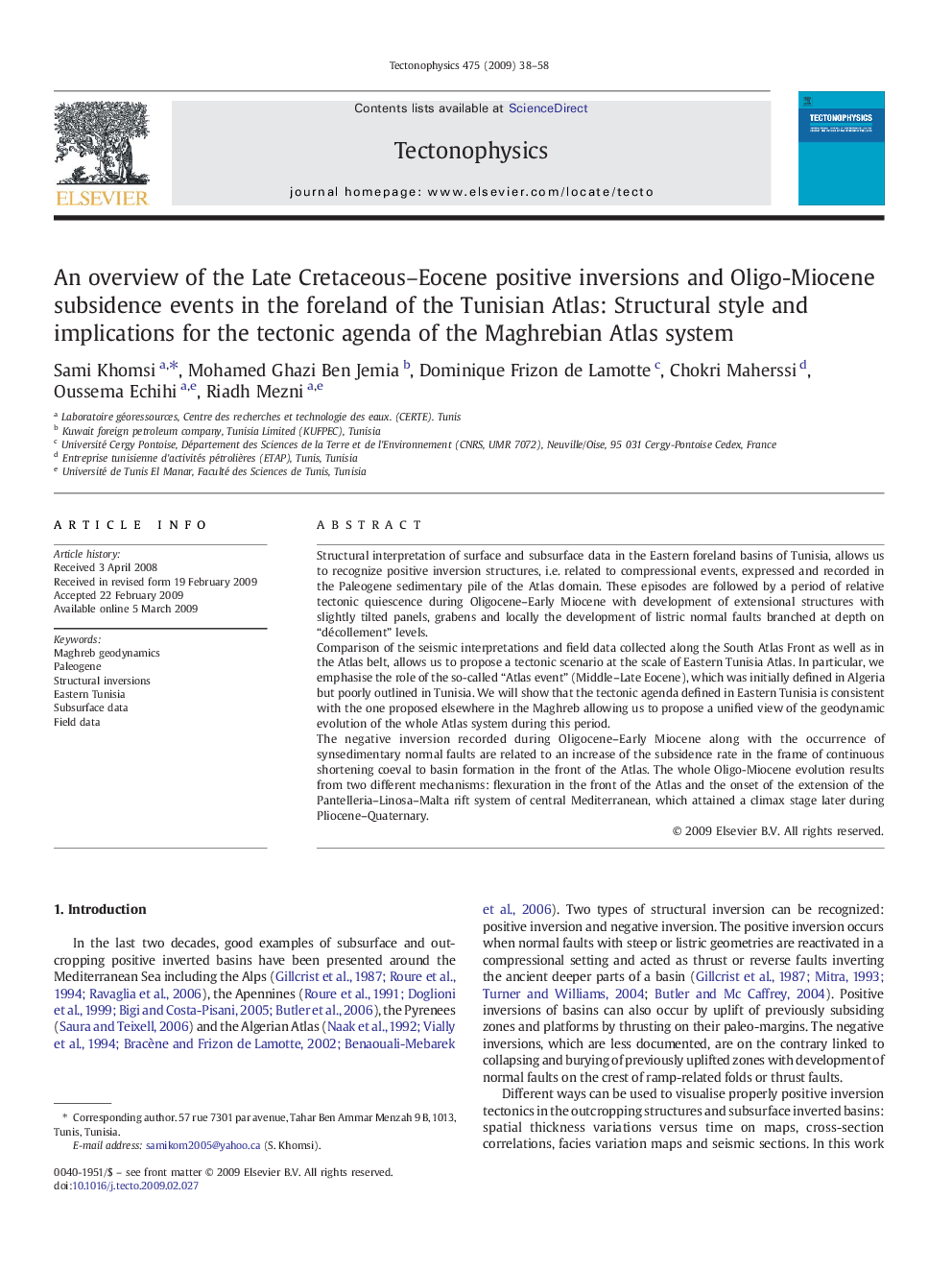| کد مقاله | کد نشریه | سال انتشار | مقاله انگلیسی | نسخه تمام متن |
|---|---|---|---|---|
| 4693859 | 1350721 | 2009 | 21 صفحه PDF | دانلود رایگان |

Structural interpretation of surface and subsurface data in the Eastern foreland basins of Tunisia, allows us to recognize positive inversion structures, i.e. related to compressional events, expressed and recorded in the Paleogene sedimentary pile of the Atlas domain. These episodes are followed by a period of relative tectonic quiescence during Oligocene–Early Miocene with development of extensional structures with slightly tilted panels, grabens and locally the development of listric normal faults branched at depth on “décollement” levels.Comparison of the seismic interpretations and field data collected along the South Atlas Front as well as in the Atlas belt, allows us to propose a tectonic scenario at the scale of Eastern Tunisia Atlas. In particular, we emphasise the role of the so-called “Atlas event” (Middle–Late Eocene), which was initially defined in Algeria but poorly outlined in Tunisia. We will show that the tectonic agenda defined in Eastern Tunisia is consistent with the one proposed elsewhere in the Maghreb allowing us to propose a unified view of the geodynamic evolution of the whole Atlas system during this period.The negative inversion recorded during Oligocene–Early Miocene along with the occurrence of synsedimentary normal faults are related to an increase of the subsidence rate in the frame of continuous shortening coeval to basin formation in the front of the Atlas. The whole Oligo-Miocene evolution results from two different mechanisms: flexuration in the front of the Atlas and the onset of the extension of the Pantelleria–Linosa–Malta rift system of central Mediterranean, which attained a climax stage later during Pliocene–Quaternary.
Journal: Tectonophysics - Volume 475, Issue 1, 21 September 2009, Pages 38–58